Prof. Dr. Lothar Ledderose
|
For details please see the |
Selected Publications
Books and Edited Volumes |
|
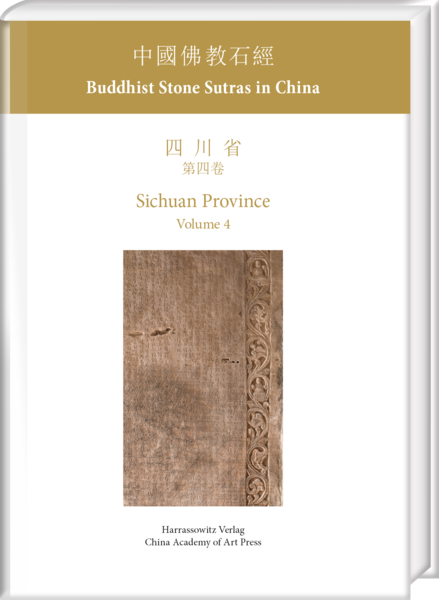 |
Buddhist Stone Sutras in China. Sichuan Province Volume 4 The fourth volume on the engraved Buddhists texts in the Grove of the Reclining Buddha (Wofoyuan), Sichuan, presents section D with two sutra caves. In cave 59, which boasts an exquisite ornamentation, the enormous Nirvana Sutra begins, only interrupted by two meditation texts. The Sutra continues in cave 66 with ca. 65,000 characters. All engravings are fully reproduced in detailed high quality photographs of the cave walls and of ink rubbings. The texts are transcribed for the first time, with notes on textual variants and variant characters. The book is in Chinese and English throughout. Essays focus on new insights about this treasure trove. |
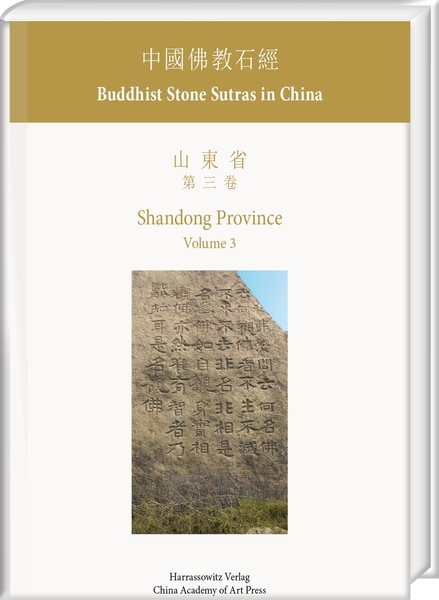 |
Buddhist Stone Sutras in China. Shandong Province Volume 3
The third volume of the five-volume series on Buddhist stone sutras in Shandong presents inscriptions on all mountains in Shandong other than those near Lake Dongping (volume 1) and the city of Zoucheng (volume 2), with the exception of Taishan (to be covered in volume 4). The northernmost entry in this volume is a lost inscription (ca. 526) once situated among the sculptures at Yellow Stone Cliff, south of Jinan. Zheng Yan analyzes the art historical significance of this site. Inscriptions under the open sky occur elsewhere at Mount Culai (dated 570), Mount Fenghuang (ca. 563 and 921), Mount Shuiniu (ca. 560), Mount Tao (second half, 6th c.), and Mount Long (second half, 6th c.), this last site discovered only in 2008. Lost inscriptions on Mounts Jian (dated 575), Yang (second half, 6th c.), and Ziyang (second half, 6th c.; here identified for the first time) have been reconstructed based on extant rubbings, epigraphic literature, and archaeological evidence. While “Perfection of Wisdom” now emerges as the key doctrinal concept in the Shandong mountains, the names of Buddhas, of which “Buddha King of Great Emptiness” is especially conspicuous, engender visions of cosmic time and space. |
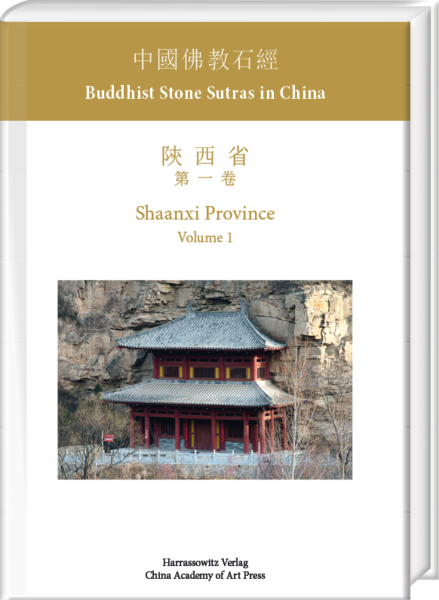 |
Buddhist Stone Sutras in China. Shaanxi Province Volume 1
The first volume of the three-volume series on Buddhist stone sutras in Shaanxi presents the engravings on the east wall of the Jinchuanwan cave. With almost 160,000 characters, this cave is the one with the largest amount of texts in China. From 2007 to 2012 the Shaanxi Provincial Institute of Cultural Relics Protection restored the cave in cooperation with the Bayerisches Landesamt für Denkmalpflege. The cave was built in the 660s by followers of the Three Levels School. The school was suppressed soon thereafter and its texts fell into oblivion in China. Texts by the school’s patriarch Xinxing (540–594) are only preserved by chance, as it were, in the far west in the caves at Dunhuang and in Japan. |
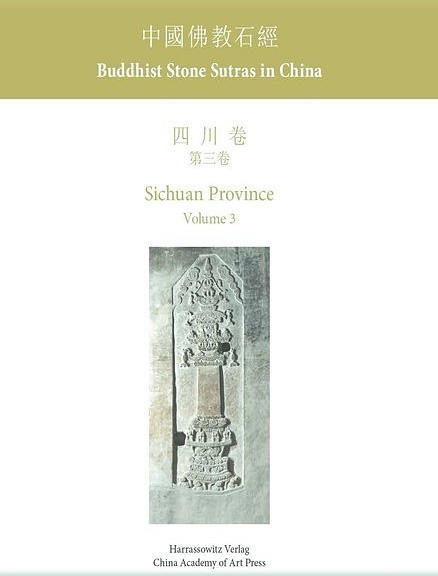 |
Buddhist Stone Sutras in China. Sichuan Province Volume 3 The third volume on the inscriptions carved in cave chapels at the Grove of the Reclining Buddha (Wofoyuan) in Anyue County, Sichuan, presents the earliest and central section of the precinct. Cave 46, which boasts a unique architecture, contains eight sutras carved in their entirety or in parts, and two dhāraṇī spells. As in former volumes, all engravings are fully reproduced in detailed high quality photographs of the cave walls and of ink rubbings. The texts are transcribed for the first time, with a scholarly apparatus noting textual variants and variant characters in the calligraphy. Essays highlight the significance of particular text versions and point out unexpected insights in this treasure store of texts. |
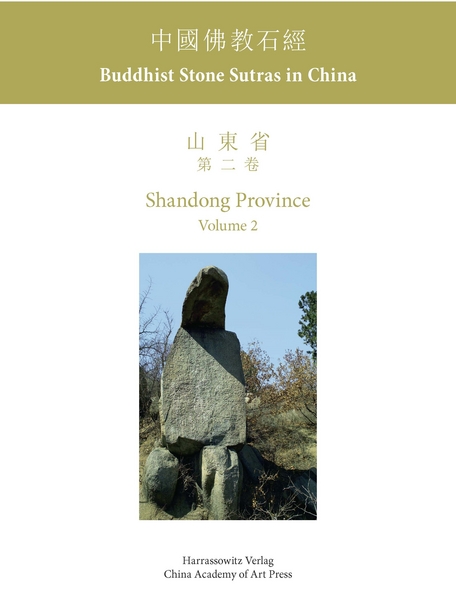 |
Buddhist Stone Sutras in China. Shandong Province Volume 2 The second volume on Buddhist stone sutras in Shandong presents the extant inscriptions on the four mountains around the city of Zoucheng: Mount Yi (564 and before 572), Mount Tie (579), Mount Ge (580), and Mount Gang (580). The studies of these inscriptions began in the late 18th century. The history of this scholarly enterprise is discussed in the introductory essay by Lothar Ledderose, “Epigraphers in Zoucheng”. |
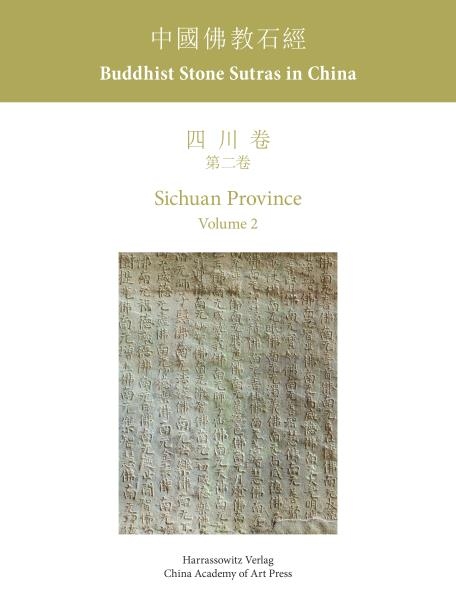 |
Buddhist Stone Sutras in China. Sichuan Province Volume 2 The Buddhist sutra inscriptions in cave chapels at the Grove of the Reclining Buddha (Wofoyuan) are almost unknown outside China. This second volume on the site presents the sutras in caves 29 and 33. Engraved in cave 29 are four of the twelve chapters of the Sutra on the Names of the Buddhas (T#440). Differing from woodblock printed versions, the task of the carvers is here indicated by recording the numbers of names that they accomplished. Engraved in cave 33 are scrolls 11 and 12 of the Consecration Sutra (T#1331), the Dhāraṇī Sutra of the Six Gates (T#1360), the Deathbed Injunction Sutra (T#389), the Sutra on Renouncing the Householder’s Life (T#202), and the Diamond Sutra (T#235). These text versions offer completely new insights into Buddhist scriptural transmission and practice. The engravings are fully reproduced in detailed high quality photographs. All engraved texts are transcribed for the first time. The scholarly apparatus notes textual variants and variant characters in the calligraphy. |
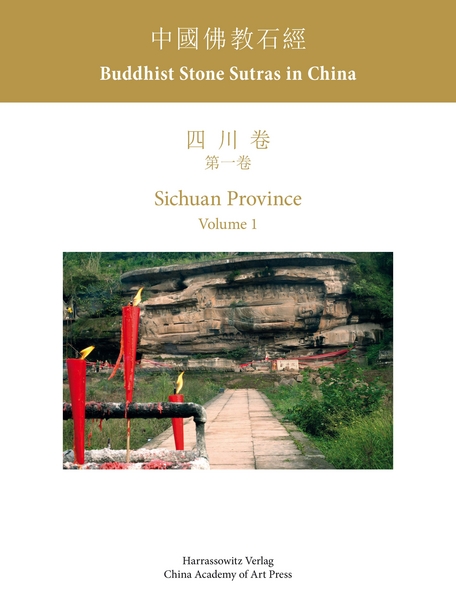 |
Buddhist Stone Sutras in China. Sichuan Province Volume 1 This volume dedicated to the Buddhist stone sutras in China is the first one on the sites in Sichuan Province. These monuments are all but unknown outside of China. Characteristic for Sichuan are cave chapels hewn out of red sandstone cliffs, each containing tens of thousands of characters. The volume presents the Grove of the Reclining Buddha (Wofoyuan) in Anyue County, where more than a hundred caves have been identified. In spite of the magnificence of this extraordinary site, few people have ever visited the valley, and almost nothing has been published about it. Sichuan 1 contains maps and extensive photographs and it concentrates on two 8th-century cave chapels in particular. Engraved in their walls are about 71000 characters of the Lotus Sutra, the most treasured scripture in Buddhism. Here, this text version is recorded for first time. The engravings are fully reproduced in high-quality photographs and in ink rubbings, and the scholarly apparatus of the transcription notes variant characters in the text and in the calligraphy. |
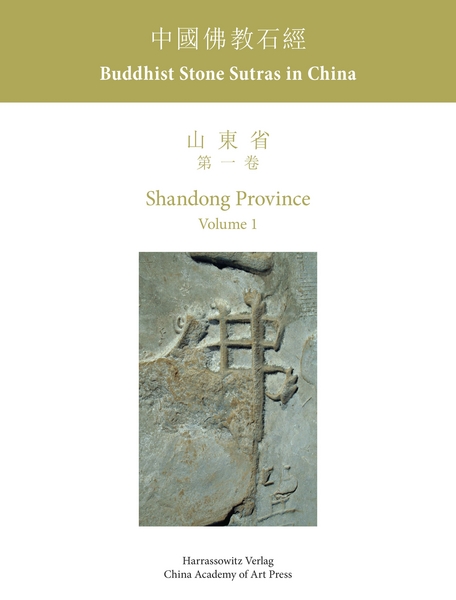 |
Buddhist Stone Sutras in China. Shandong Province Volume 1 This is the first volume of an extensive series dedicated to the Buddhist stone sutras carved into stone in several Chinese provinces. The sutra texts in Shandong, dating from about 560 to 580, were cut into bare rock under the open sky. These little-known monuments are a major chapter in the history of art, in the Buddhist textual tradition, and in landscape design. The volume presents startling scripts on precipitous cliffs and massive boulders both in photographs taken at the sites and in rubbings made in ink. Not only does this corpus offer major religious texts, but it also makes available almost unknown calligraphic achievements. Among them are names of Buddhas, up to nine meters high, that were only discovered in the 1990s. All texts at a particular site, including the passages from the Buddhist sutras and the later colophons, have been completely documented, translated and analyzed. They shed new light on an exciting period in Chinese history, when the Middle Kingdom was intimately engaged with Inner Asia and even India. The foreign religion, which brought the anthropomorphic pantheon to China, manifests itself here in the quintessential Chinese medium of calligraphy. |
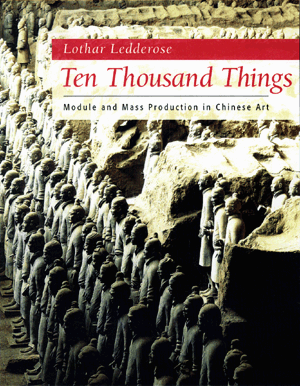 |
Ten Thousand Things. Module and Mass Production in Chinese Art |
Other Books:
Orchideen und Felsen. Chinesische Bilder im Museum für Ostasiatische Kunst , Berlin. 1998.
Japan und Europa: 1543-1929 (ed.). 1993.
Palastmuseum Peking. Schätze aus der Verbotenen Stadt (ed.). 1985.
Im Schatten hoher Bäume. Malerei der Ming- und Qing-Dynastien (1368-1911) aus der Volkrepublik China (ed.). 1985.
Mi Fu and the Classical Tradition of Chinese Calligraphy . 1979.
Die Siegelschrift (chuan-shu)in der Ch'ing-Zeit . 1970.
Articles:
Carving Sutras before the Catastrophe. 2005.
Chinese Influence on European Art: Sixteenth to Eighteenth Centuries. 1991.
Die Gedenkhalle für Mao Zedong. Ein Beispiel von Gedächtnisarchitektur. 1988.
Chinese Calligraphy: Its Aesthetic Dimension and Social Function. 1986.
Some Taoist Elements in the Calligraphy of the Six Dynasties. 1984.
The Earthly Paradise. Religious Elements in Chinese Landscape Art. 1983.
Some Observations on the Imperial Art Collection in China. 1978-79.
Subject Matter in Early Chinese Painting Criticism. 1973.



